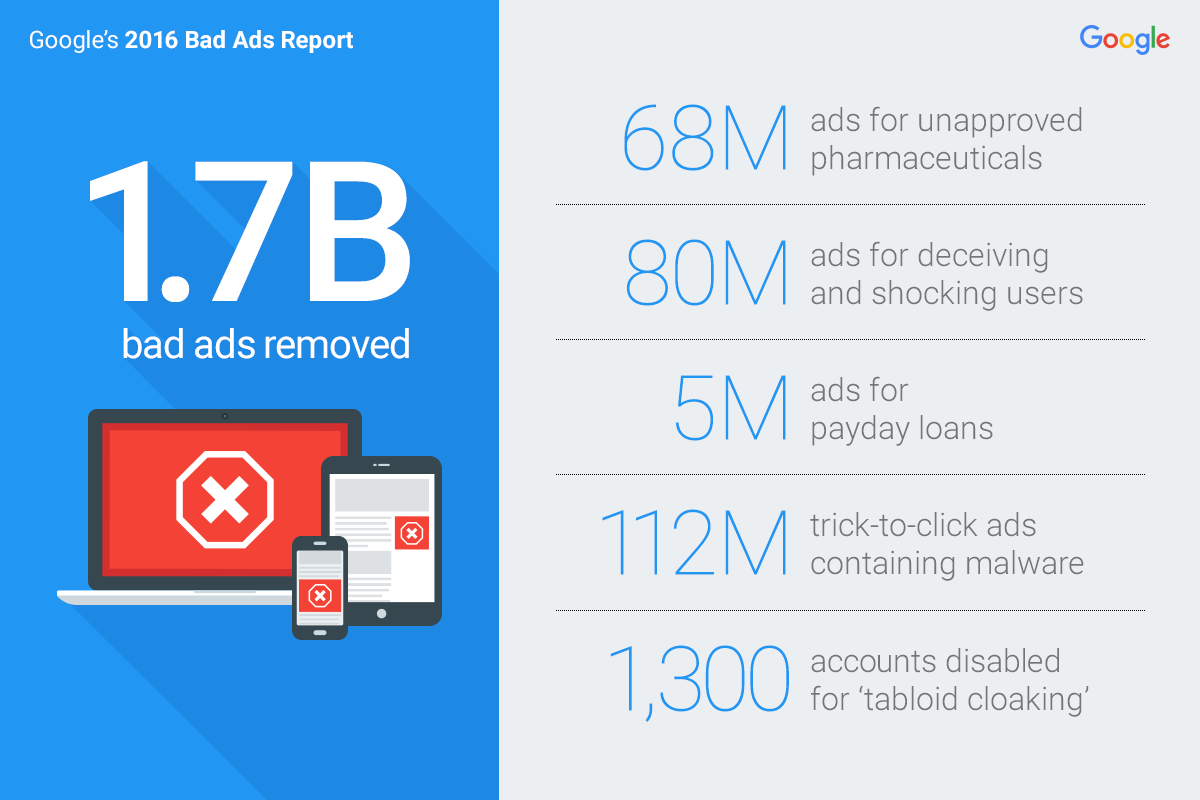Google’s 2016 Bad Ads Report: 1.7 billion ads removed, including fake news ads
The company says efforts to crack down on payday loan ads, ads that look like system errors and "tabloid cloaking" ads were among those that led to an increase in removed ads in 2016.
In its annual Bad Ads report, Google says it took down more than double the number of ads in 2016 that it did in 2015 by removing 1.7 billion ads, compared to the 780 million removed in 2015.
Google credited several changes for the big increase in removed ads.
The new policy of removing payday loan ads that don’t meet certain criteria went into effect in July. Google says it took down more than five million payday loan ads since that time. (If you’re wondering why ads are still showing on those search queries, we took a look last October.)
Google also continued to make system updates to be able to spot bad ads more reliably, among them the “trick to click” ads that look like system error notifications to get users to download malware. Google says the number of “trick to click” ads it detected and removed increased six-fold from the previous year, to 112 million.
Other efforts in 2016 included detecting more “self-clicking ads” on mobile devices. While small in comparison to some of the other detection efforts, Google says it disabled more than 23,000 of these ads in 2016, compared to just a few thousand in 2015.
And in a year when “fake news” became news, it’s not all that surprising that fake news ads, or “tabloid cloaking” ads, proliferated. These are the kinds of ads that look like news or entertainment headlines and take users to sites selling things like weight-loss products. Google suspended more than 1,300 accounts in 2016 but says this type of ad is gaining traction because they get clicks.
“During a single sweep for tabloid cloaking in December 2016, we took down 22 cloakers that were responsible for ads seen more than 20 million times by people online in a single week.”
On the publisher side, Google updated its AdSense misrepresentative content policy in November and says it reviewed 550 sites suspected of misrepresenting content to users in ways that included impersonating news organizations. The company says it took action against 340 for violations and banned nearly 200 publishers from the AdSense network.
[Click to enlarge.]
Contributing authors are invited to create content for Search Engine Land and are chosen for their expertise and contribution to the search community. Our contributors work under the oversight of the editorial staff and contributions are checked for quality and relevance to our readers. The opinions they express are their own.
Related stories

